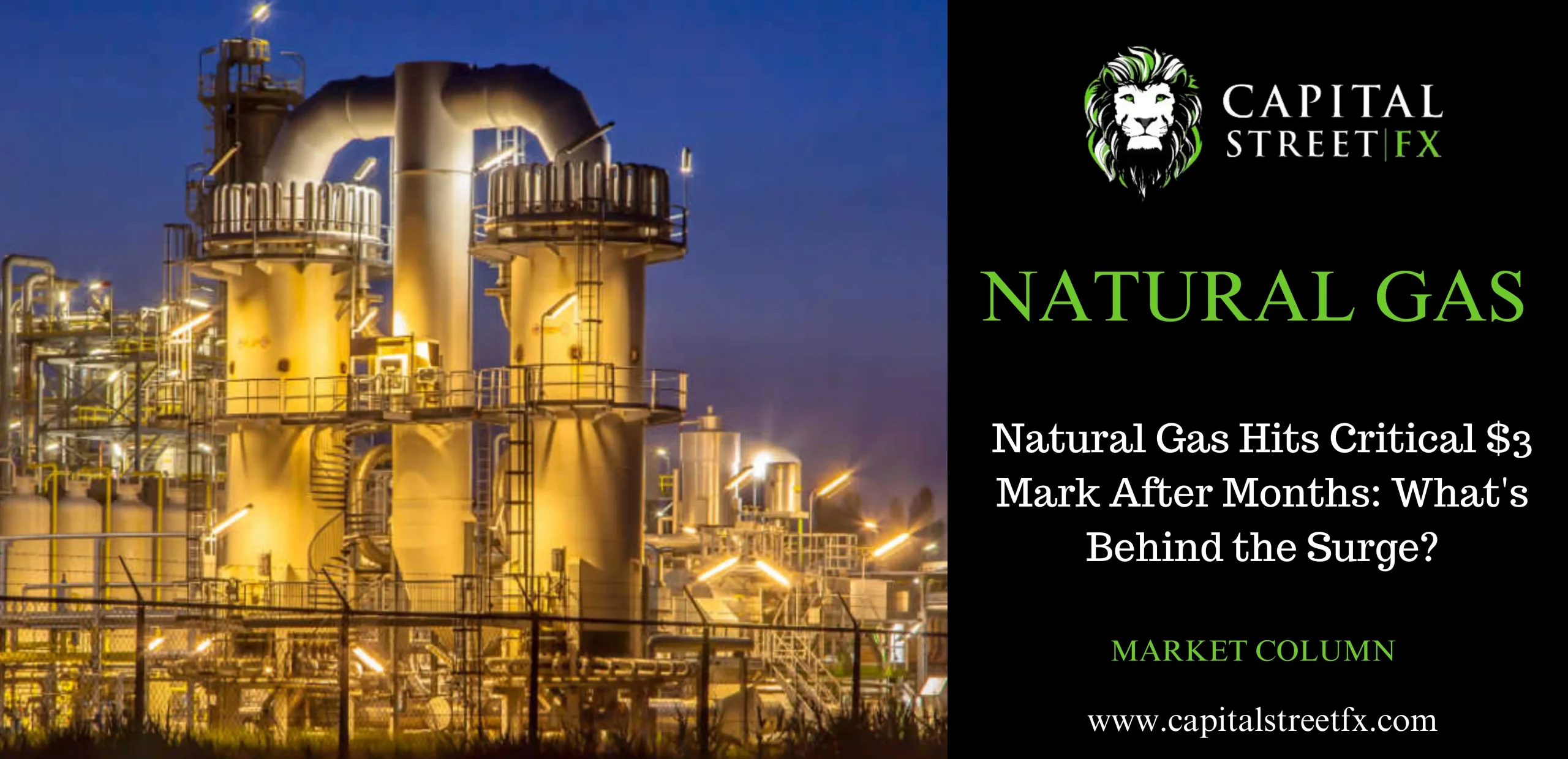Natural Gas Hits Critical $3 Mark After Months: What’s Behind the Surge?
Introduction
In an unexpected turn of events, natural gas prices have surged to a significant milestone, breaking through the $3 per MMBtu level for the first time since January. This sudden upswing has raised eyebrows and triggered discussions across the energy market. Let’s delve into the factors that have led to this remarkable development and explore the implications for consumers, traders, and the overall energy landscape.

A Surprising Rebound: Natural Gas Prices Soar
Amidst concerns about reduced production due to pipeline issues and heightened speculative activities, natural gas contracts have skyrocketed to levels not witnessed in the past seven months. This surge has pushed prices above the crucial $3 threshold, signaling potential shifts in supply and demand dynamics.
The Impact of Speculation
Speculators, eager to capitalize on the anticipated slowdown in production, have played a pivotal role in driving up natural gas prices. This surge comes at a time when the energy market is grappling with uncertainties related to pipeline constraints and their subsequent impact on gas flow.
Behind the Numbers: Gas Price Movement
The front-month September gas contract on the Henry Hub of the New York Mercantile Exchange has witnessed a rapid ascent, reaching $2.95 per MMBtu at 09:35 ET (13:35 GMT). This represents a substantial 6.2% increase, amounting to 17.3 cents on the day. Notably, the price even touched $3.018, underscoring the market’s responsiveness to underlying factors.
Breaking the Silence: Gas Prices Cross the $3 Mark
Gas prices on the hub have remained below the $3 mark for months. However, the recent surge has shattered this status quo, reminiscent of the week of January 20 when prices peaked at $3.595. This notable rise sparks questions about the driving forces behind such price fluctuations.
Factors at Play: Production, Weather, and Pipelines
A Tug-of-War: Production Expectations vs. Reality
The market’s prolonged stagnation within the mid-$2 range can be attributed to a dual interplay of factors—output that consistently exceeded expectations and milder weather conditions than initially forecasted. This combination reduced the demand for heating and cooling energy, thus tempering price movements.
Pipeline Woes: NEXUS and REX Maintenance
Critical pipelines, specifically the NEXUS and REX pipelines, have undergone maintenance disruptions, leading to a significant slowdown in gas output. The 256-mile-long, 36-inch NEXUS interstate natural gas transmission pipeline, designed to transport up to 1.5 billion cubic feet (bcf) of gas daily from eastern Ohio to southeastern Michigan, has encountered hurdles affecting gas flow.
Regional Implications: Ripple Effects of North-eastern Flow Suppression
Experts at Houston-based Gelber & Associates, an energy markets advisory firm, have pointed out that the impact of reduced North-eastern gas flows will likely reverberate across Lower 48 production throughout the week. This anticipated effect raises concerns about the broader ramifications on the national energy landscape.
Conclusion: A New Chapter in Gas Price Dynamics
As natural gas prices breach the significant $3 mark after months of stagnation, the energy market finds itself at a crossroads. The interplay of speculation, pipeline issues, and reduced production has contributed to this sudden surge. As traders, consumers, and industry experts watch closely, the implications of this milestone are far-reaching, reflecting the complex web of factors that shape the energy landscape. As we navigate this chapter, one thing remains clear—the dynamics of natural gas prices are as intricate and responsive as ever.
FAQs: Addressing Key Questions
Q1: Why have natural gas prices surged all of a sudden?
A1: The surge in natural gas prices can be attributed to a combination of factors, including heightened speculation, concerns about pipeline-related disruptions, and a significant reduction in gas output due to maintenance issues.
Q2: How significant is the breach of the $3 mark?
A2: The breach of the $3 per MMBtu mark is noteworthy as it signifies a departure from the prolonged price stagnation observed in the mid-$2 range. This development suggests a potential shift in supply-demand dynamics and market sentiment.
Q3: What role have speculators played in this price surge?
A3: Speculators have played a substantial role in driving up natural gas prices. Anticipating production slowdowns and potential supply constraints, speculators have contributed to the upward pressure on prices.
Q4: What are the implications of reduced Northeastern gas flows?
A4: The reduction in Northeastern gas flows is likely to have cascading effects on Lower 48 production. This outcome highlights the interconnectedness of regional gas supply and its potential impact on the broader energy market.
Q5: How have pipeline concerns influenced gas prices?
A5: Maintenance concerns surrounding critical pipelines, such as NEXUS and REX, have led to a slowdown in gas output. This disruption has contributed to the upward pressure on prices by creating supply-side uncertainties.
Q6: What can consumers expect in the coming weeks?
A6: Consumers should monitor the situation closely as developments unfold. Depending on the resolution of pipeline concerns and the trajectory of gas production, prices could exhibit further fluctuations in the short term.

